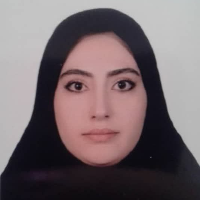Assessment of Vulnerability and Societal Security Level in Informal Settlements (Case study: Koshtargah neighborhood-Urmia)
The general purpose of the present research is to assess societal security and identify the level of vulnerability in the informal settlement of the “Koshtargah”.
The present research is of descriptive-analytical type and is of applied nature. The information has been collected in two ways: documents and field. In this research, societal security is considered as an independent variable, while economic, social, environmental and physical, cultural and political dimensions are considered as dependent variables. The statistical population of this research is the residents of “Koshtargah” neighborhood. According to the statistics released by “Statistics Center”; 15,000 people lived in the neighborhood in 2016. The sample size is based on Cochran's formula and 374 people are randomly selected. The validity of the questionnaire was confirmed by experts, and the reliability of the questionnaire was also confirmed using Cronbach's alpha test with a coefficient of 0.706. Data analysis has been done quantitatively and qualitatively. Single-sample t-test, Friedman, Spearman's correlation and Kriging method were used to evaluate the data.
The results show that according to the location data, the damage rate in the middle part of the neighborhood is higher than other parts of the neighborhood. Given the analysis of questionnaire data, the economic dimension with an average of 2.67 is in an undesirable situation compared to other dimensions. According to the results of Spearman's correlation test; economic, social, environmental and physical, cultural and political dimensions have a significant and direct relationship with societal security. Based on the results of the present research, societal security in “Koshtargah” neighborhood is at an average level. According to the results of the Friedman test, the economic dimension ranks last among other dimensions that require the urban management to pay more attention to it.
-
Compilation of effective scenarios on the transition from water crisis in West Azarbaijan province with Spatial Planning Approach
Amirmohammad Rahimi Eyblou, Mirnajaf Mousavi *, Naser Soltani
Journal of Sustainable Urban and Regional Development Studies, -
Phenomenological analysis of dormitory culture:Female students' experiences and perceptions of dormitory life
*, Jafar Ahmadi
Journal of Strategic Studies in Culture, -
Formulation of drivers and scenarios affecting population policies in West Azarbaijan Province with a spatial planning approach
Khadijeh Nazari Amestejan, Mirnajaf Mosavi *, Aliakbar Taghilo
Journal of Sustainable Urban and Regional Development Studies, -
Assessment of the importance-performance levels of sustainable development indicators in informal settlements (Case study: Koshtargah Neighborhood - Urmia)
Nima Bayramzdeh *
Journal of Design and Planning in Architecture and Urban Planning, -
Evaluation of the level of realization of city prosperity indicators in Khoy city from the perspective of residents
Mirnajaf Mousavi *,
Journal of Urban Space and Social Life, -
Sociological research on the evolution of identity sources in Iran
*
Journal of Historical Findings, -
Investigating the Feasibility of Good Urban Governance with Emphasis on Spatial Justice (Case Study: 5 Regions-Urmia)
Mirnajaf Mousavi *, Reza Ghaderi, , Roya Kamel Nia
Research and Urban Planning, -
Structural Analysis of Relations of Urban Justice and Competitive Planning With Emphasis on The Mediating Role of Social Capital (Case Study of Urmia)
Hatem Parnian *, Zakaria Ahmadian,
Journal of Geography and Urban Space Development,




